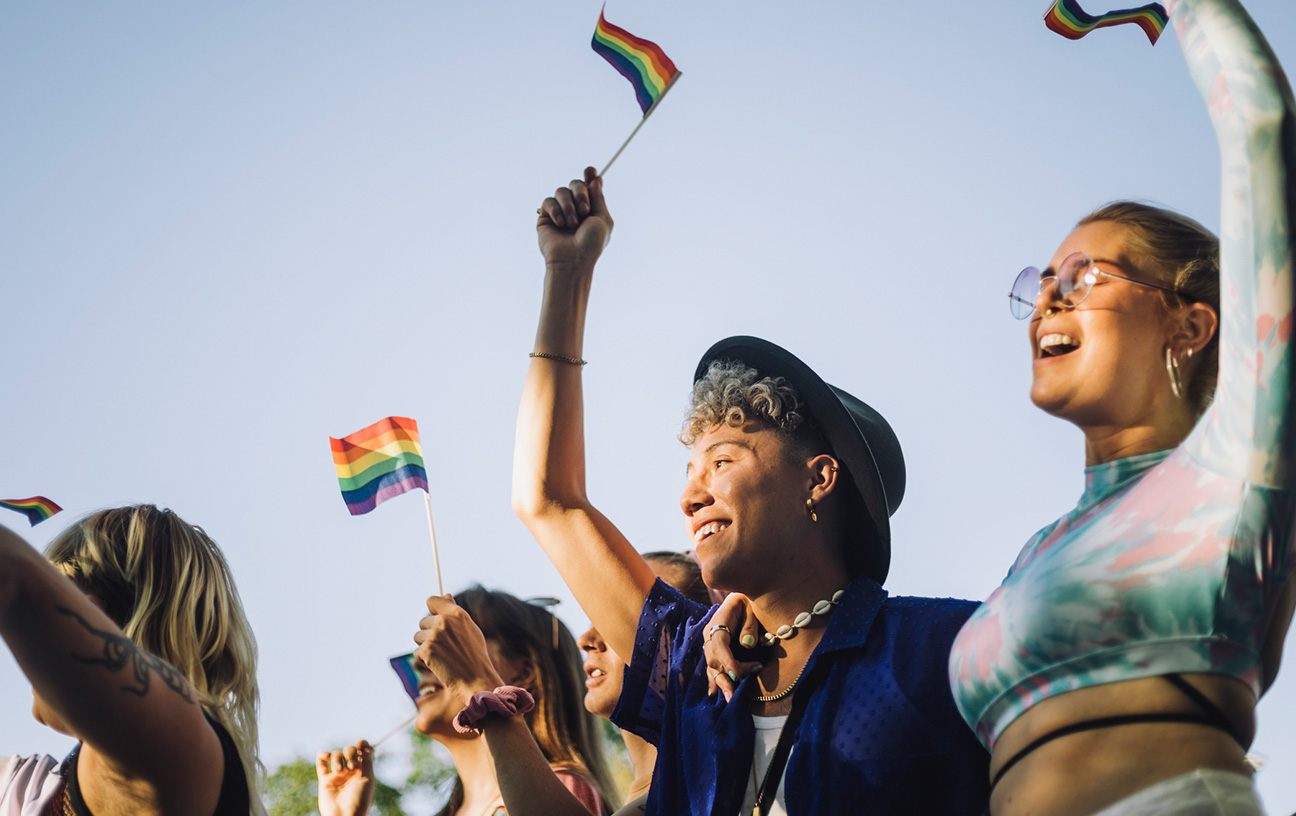0 minute read
A Guide to Pride: Education on Sex and Gender
Ahead of World Pride, therapist Aleksandra Trkulja (she/her) shares sex and gender education as a resource for anyone and everyone seeking insight into sexual and gender identity labels, the importance of pronouns, and how to be an ally to the LGBTQIA+ community.
Published: February 2023
Origin: Australia
In celebration of World Pride 2023, which commences on Friday February 17, resident Sex and Relationship Therapist and queer femme Aleksandra Trkulja (she/her) shares insight into sexual and gender identity labels, the importance of pronouns, and how to be an ally to the LGBTQIA+ community.
"World Pride has arrived, AKA the gay Olympics for the LGBTQIA+ community.
As a queer femme, Pride and Mardi Gras is a bitter sweet time. I feel so joyful seeing the vibrance of people’s self-expression, but I also feel a heaviness remembering it took violence, death, and discrimination for us to be able to express ourselves openly.
So I wanted to provide you with some sex & gender 101 education ahead of Pride.

In this article I’m going to break down:
+ The sexual and gender identity labels commonly used
+ The importance of pronouns
+ What homo-phobia and bi-phobia is
+ And some tips on being an ally
What is sexuality?
Sexuality is multifaceted. It’s so incredibly rich and nuanced that The World Health Organisation has had a ‘working’ definition going since 2006.
Sexuality encompasses sex and gender identity, eroticism, pleasure, intimacy, and reproduction. It isn’t just who you have sexual or romantic relationships with.
Sexuality is expressed through our thoughts, fantasies, desires, attitudes, behaviours, and relationships.
Sexual attraction may vary too, in that who you’re sexually attracted to may not be the same as who you’re romantically attracted to.

What are the Sexual Identity labels?
Homosexual/Gay/Lesbian - when you’re physically, emotionally, and romantically attracted to people of the same gender as you.
Heterosexual/Straight - when you’re physically, emotionally, and romantically attracted to people of the opposite gender to you.
Bisexual - when you’re physically, emotionally, and romantically attracted to people with more than one sex or gender identity, or all genders.
Pansexual - When you’re physically, emotionally, and romantically attracted to people despite their sex or gender identities.
Asexual - when you have no sexual attraction for others.

Discrimination
Homophobia is the contempt, prejudice, hatred, or negative attitudes toward homosexuals, such as lesbian women, gay men, or those in same-sex relationships, based purely on their sexuality.
It leads to discrimination, assault, and abuse, against homosexuals.
Biphobia is the dislike, or discrimination toward bisexual people.
This looks like telling bisexuals they’re ‘confused’, ‘going through a phase’, or in denial of being homosexual.
Both straight and gay people can discriminate against bisexuals, and this is called ‘double discrimination. It’s part of the reason why research shows bisexuals have the poorest mental health of all the sexual minority populations.
What is gender identity?
When it comes to gender, it’s just as multifaceted and nuanced.
Your anatomical sex (female/male/intersex) is sex assigned at birth. It does not determine your gender identity.
Your gender identity is your own psychological sense of woman-ness/man-ness.
Gender expression is again separate to both, as it is how you express femininity and/or masculinity.
We’ve been conditioned to have strong associations and assumptions about other people’s gender identities.
What are the gender identity labels?
Cis-gender is a term used to describe when your gender identity aligns with your anatomical gender assigned to you at birth.
You are cis-gender If you have a penis, and identify as a man. Or you have a vulva, and identify as a woman.
Trans-gender is when your gender identity does not align with the sex assigned to you at birth.
People who were assigned female at birth, but identify as a man, or vice versa, are trans.
Non-binary is an umbrella term used to describe gender identity that falls outside of male and female.
Gender fluid describes someone whose gender identity may move between feeling more like a man some days, and a woman on other days.
Why are pronouns important?
Pronouns refer to the people talking (you, or I), or someone that is being talked about (he, she, they, this).
Pronouns like he and she are gendered. They imply gender identity.
He- male-identifying people. She- female identifying people.
They can also be used by people who don’t identify as male or female.
They/them/theirs are gender neutral pronouns. The do not imply gender identity. These pronouns are often used by non-binary, or gender diverse folk.
We often assume that a person’s genitals or body reflects their gender. But as we’ve discussed, this isn’t always true of their experience.
Do not argue with someone about the pronouns they use. And if you mess it up, correct yourself and move on.
How to be an ally
Being an ally is actually super easy. It looks like this...
+ Don’t assume someone's sexual or gender identity
+ Notice your own beliefs about homosexual and bisexual folk
+ Don’t make homophobic jokes or comments
+ Educate yourself on the challenges gay and bi people face
+ Support activist groups and individuals
+ Don’t make someone’s sexual or gender identity the defining feature of them
+ Speak up and defend people against homophobic comments
+ Treat all people with dignity respect irrespective of their sexual or gender identities
This Pride, treat everyone with love, kindness, and care.
We’re all out here just trying to exist, so let people exist in the way they deem is best for them."
Aleksandra Trkulja
Certified Sex Therapist & Clinical Counsellor
Share